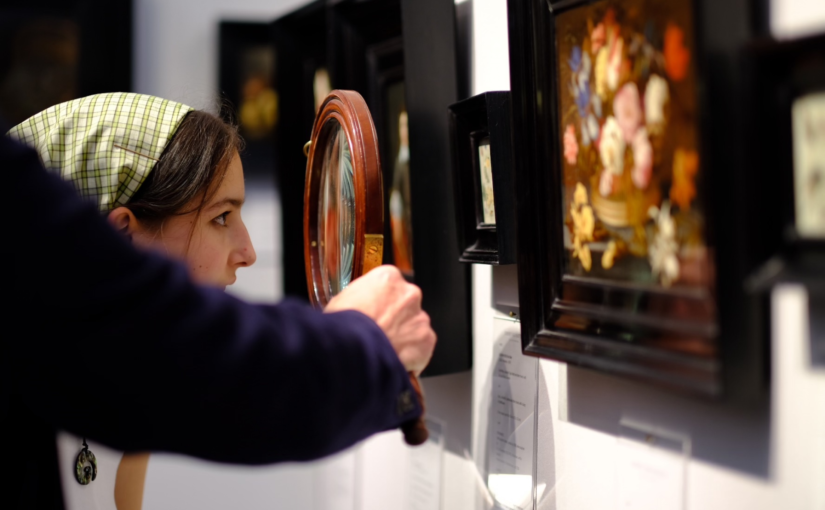Introduction
Han van Meegeren was an ambitious man. He was up for the death penalty. Having been widely rejected as an artist by critics, he instead worked to become the most prolific art dealer in the Netherlands of the 1930s and 40s. As master dealer in Dutch Golden Era (17th Century) paintings, van Meegeren sold one of the greatest jewels of Dutch heritage, Jan Vermeer’s Christ with the Adultress to Nazi Reichsmarschall Herman Göring in exchange for 134 paintings. And now, awaiting trial in a crowded Amsterdam courtroom in 1945, this art dealer’s fate seemed sealed, charged with collaborating with the enemy.
But he had an ace in his pocket. As he cleared his throat to give a statement to the court, the words he uttered would rock the art world to its foundations, rewriting art history forever.
‘‘The painting in Göring’s hands is not, as you assume, a Vermeer of Delft, but a Van Meegeren! I painted the picture!’’.

In fact, almost none of the paintings he’d ever sold were originals. After months of investigation into his works including a series of live painting sessions under the close observation of bemused reporters and jurors, the charges of collaboration and plunderer of Dutch cultural heritage, and the death penalty were all dropped. From one of the most prolific art dealers in the Netherlands, overnight he became ‘the world’s greatest art forger’, the national hero ‘who swindled Göring’.

Bizarrely, brazenness such as this today is not so rare. Conservative estimates quietly peg 50% of the high value art market as forgeries. But why is this so pervasive today, and just how had van Meegeren managed to effortlessly fool so many back then, making it very difficult for him to prove his fraud?
To unpack this, setting aside the complexities in the forensics of historic artist materials, we need to look at the three approaches to art forgery, and the lessons that they hold for designers and innovators.
Three Ways to Create a Forgery
Approach 1: The Direct Copy
This is by far the easiest and laziest of the approaches seeing the forger directly copying a borrowed or stolen artist original, and then replacing the original with the forgery. However, whilst this may have worked in the past before the ease of modern global communications (see the images below), today even after the enormous task of borrowing or stealing the original is achieved, having two exact copies of a piece of work floating around renders any subsequent sale a little awkward to pass off.

From left to right: Self Portrait, Albrecht Durer (1471-1528), Self Portrait, Forgery by Wolfgang Küffner (1799).
Approach 2: The Mashup
Enter the more enterprising forgers who began taking parts of an artists’ work from two or more paintings and merging them together to create a mashup or ‘pastiche’. As we can see from the three images below, the two Holbein paintings to the left have clearly had features from two paintings directly copied and merged together into a new ‘original’ painting by the forger.
The issue here, however, is that a forgery using this approach is extremely easy to spot by any expert worth their salt with the help of a little pattern matching. It also ultimately fails to deal with the subject or message of the painting. With their confused copy and paste job, and a smattering of unrelated features, the forger demonstrates little to no understanding of the artist or the message of the painting.

From left to right: A Portrait of a Young Man, Hans Holbein (1541), Antoine, Duke of Lorraine, Hans Holbein (1543) and Forgery of Unknown Origin (now lost).
Approach 3: The Impersonator
The greatest forgers ever known (and those that still have yet to be caught) instead thoroughly research and absorb compositional techniques, colours, styles and recurrent themes from the original artist’s works. A good forger will then delve into specific moments and events in the original artist’s personal life, looking to understand the inner motivations and contemporary context, the elements that the forger can use to build a persona or working model of the original artist’s mind and vision. With this body of research, they then effectively impersonate the artist mentally to create a completely new painting that the original artist may themselves have created using the themes and messages the artist might have wanted to say.
Han van Meegeren’s notes or persona of Vermeer may have looked something like the following.
Themes in Vermeer’s paintings:
- Most of his paintings involved deep ultramarine blues and yellows
- A window with light coming from the left was very typical
- He often painted women in various domestic, real life, scenes

Vermeer’s originals from left to right: Woman with a Water Jug (1662), The Milkmaid (1658), Lady Standing at a Virginal (1672), Woman with a Lute (1663).
About Vermeer’s life:
- Vermeer was thought to be taught by the Caravaggio school and style
- On marrying his Catholic wife, Vermeer converted to Catholicism
- His Catholicism resulted in only one painting marking this important event in his life
- Conversion to Catholicism was dangerous business in Calvinist 17th Century Netherlands, which may explain the few religious paintings
- Vermeer had very few paintings remaining intact having spent the 200 years after his death in relative anonymity, making it easy to ‘discover’ new ‘long lost’ paintings.
Van Meegeren combined these notes, into a religious scene in the style of Vermeer’s master, Caravaggio. This was just one of a series by Van Meegeren impersonating a Vermeer who may have been grappling with and exploring his newfound religion.

From left to right: Supper at Emmaus, Han van Meegeren (1937), Supper at Emmaus, Michelangelo Merisi da Caravaggio (1606)
Read Part 2: A Framework for True Innovation from the Art World →
An artist by origin, at university she majored in business, and began her career studying consumer behaviour and innovation, quickly transitioning to apply this knowledge towards the design of compelling interfaces. She is a capable storyteller and bridges the gap with development by translating a technical vision to others, from words to investors to designs for users.



